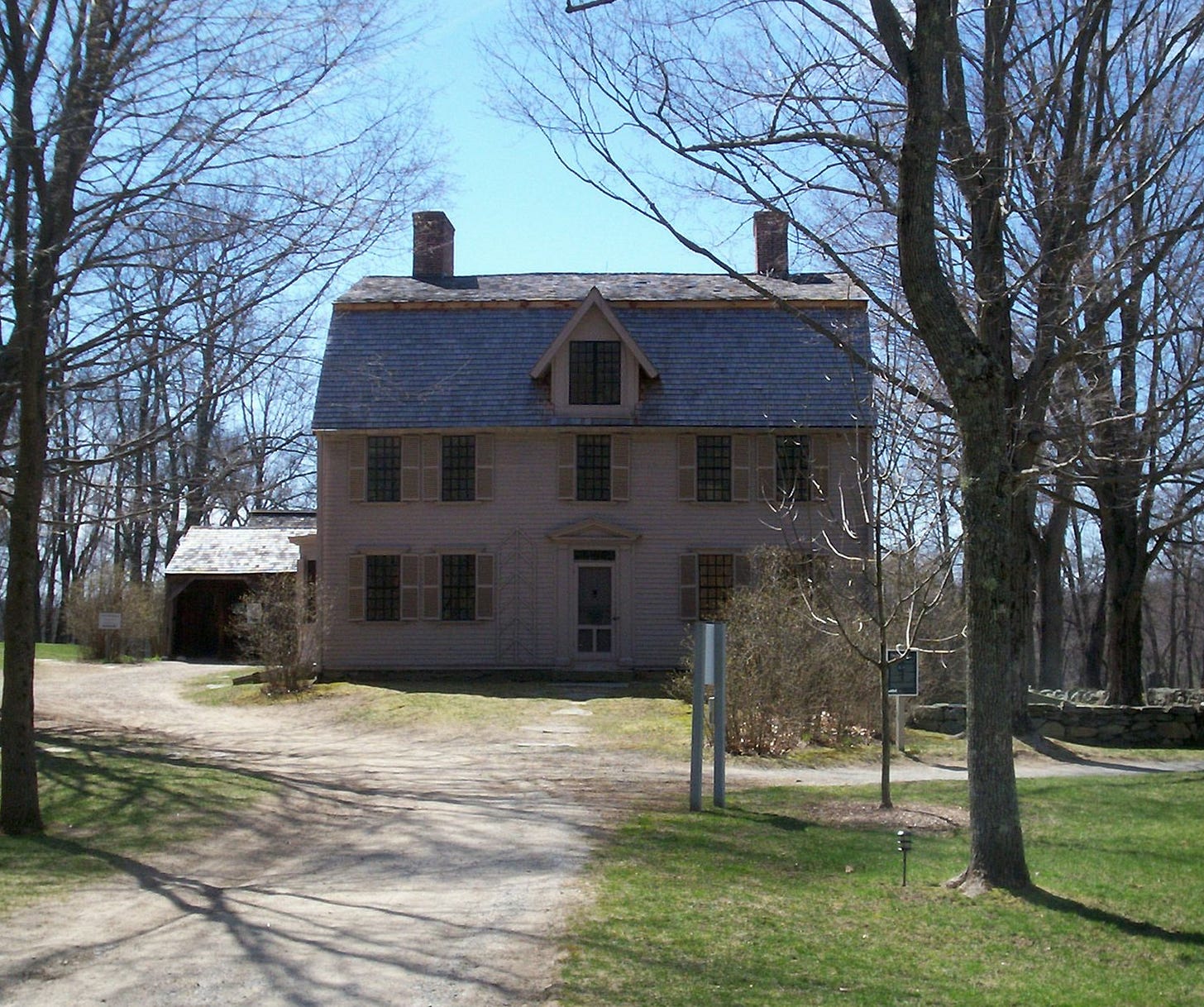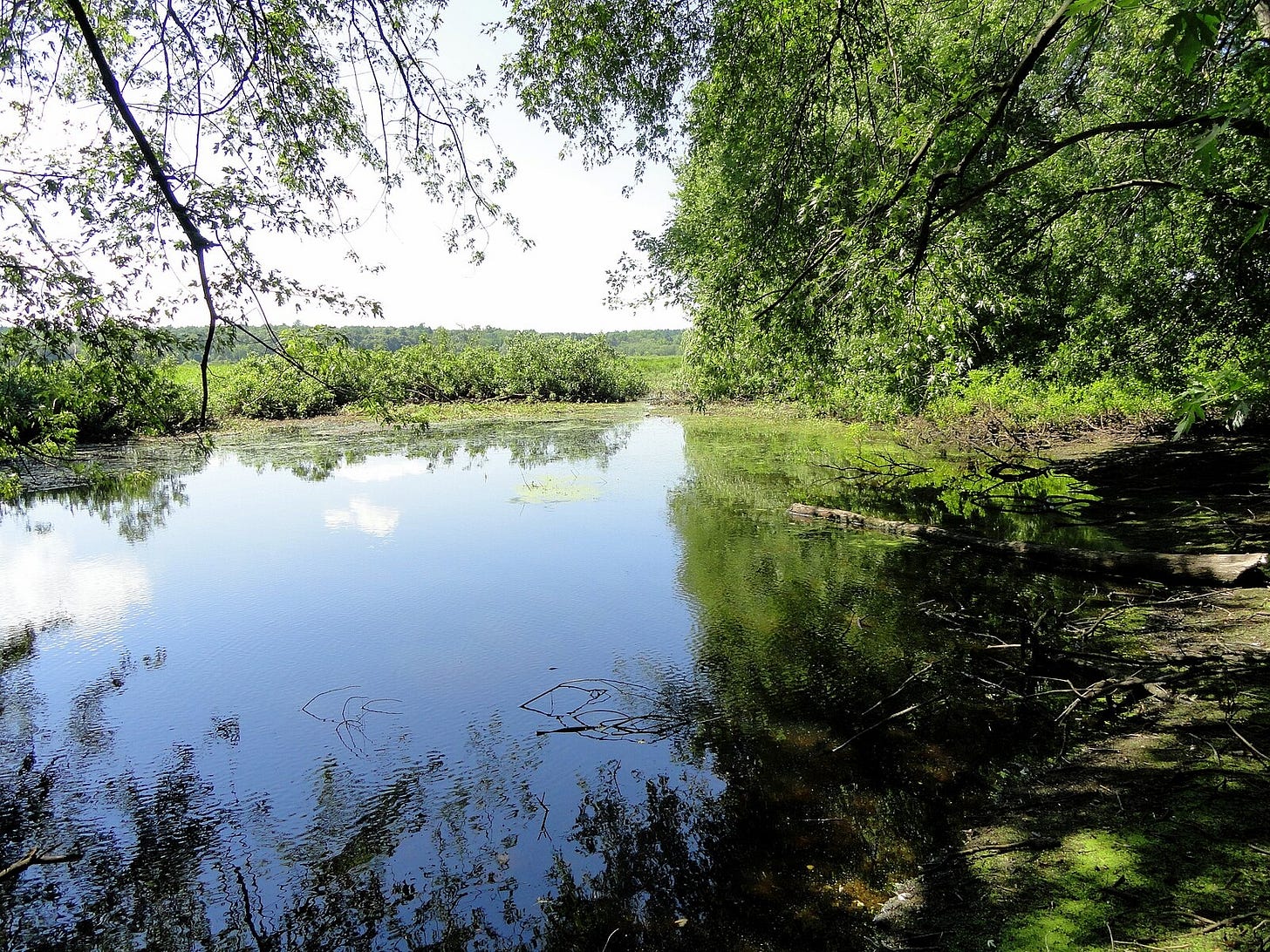Ley Lines, Concord, and the Supernatural
Mercury may be responsible for more mischief than its infamous retrogrades.
Recently I was a guest on a new podcast called “Concord Storytellers,” about the town of Concord in Massachusetts. Some of you may know that I have a long history with Concord—having done research on Thoreau, been a former Board Member of the Thoreau Society, and of all things, a ghost tour guide with the now-defunct Concord Tour Company. Concord is certainly my adopted hometown.
So when my friend approached me to see if I would be a guest, and if I could think of anything “offbeat” or “unusual” to talk about this tiny town with a big historical punch, I knew just the thing: ley lines.
If you’re around Concord long enough, you’ll inevitably hear whispers about ley lines, fairies and other supernatural phenomena being associated with this major historical town. It’s like a badge of initiation—if you know, you know.
What are ley lines?
The term “ley line” was coined in 1921, when a British landscape photographer and amateur archaeologist Alfred Watkins noticed that ancient sites around Britain all fell into a strange alignment. (The term “ley” means a field for grazing by livestock.) He said he felt a “rush of revelations” after he noticed that a number of ancient sites stood in a perfectly straight line, and his view from the top of the hill in the English countryside seemed to confirm what he was seeing on a map of them. His observation echoed other alignment theories which suggested that ancient humans were in tune with some magnetic grid across the globe, and constructed sacred places on it.
Over time, ley lines morphed into being known as “rivers of supernatural energy.” Places where they intersect were supposedly especially potent, and the energy there could be harnessed by particular individuals. Watkins himself theorized in his book The Old Straight Track that the lines were just ancient trade routes, but the idea was squashed as impractical. Ley lines were taken up during the 1960s with Tony Wedd in 1961 suggesting that ley lines were used by prehistoric humans to communicate with aliens. John Michell introduces the idea of ley lines as being “earth energies” in his 1969 book The View Over Atlantis. Scientists have used magnetometers to test the areas with some detecting something, and others detecting nothing. You’ll hear some theories that ley lines form a confluence of energy similar in form to the Caduceus, a staff entwined by two serpents. The Caduceus, incidentally, was carried by Hermes (Mercury), the messenger of the gods, known for stirring the pot. Mercury is the source of the planetary ray in Vedic astrology which governs the intellect and a sort of moral neutrality.
A simple search on Youtube, and you’ll find people across the globe (many of them farmers) attesting to their existence. You’ll hear them saying there is a feeling of “electricity” in the areas, causing one to feel a sense of peace, but also a subtle awareness that something is “acting” upon them. There’s a mischievousness to them, especially in Ireland. One well-known Galway farmer, Pat Noone, maintains a respectful, safe distance from the fairies living on farm, whom he says “look like the image of yourself—whatever height you are, they will be that height.” He says they’ve looked over his livestock in exchange for being (relatively) left alone in peace. People flock to his farm, which he asserts is on a ley line, from across the world to investigate these fairies, and to connect with the energies on the farm.
Concord’s Many “Rivers”
Rumors have persisted in Concord for decades that the Old Manse and Old North Bridge are on a ley line. What’s interesting about these two monuments is that they mark the site of two revolutionary historical events: The start of the American Revolutionary War, and the writing of Emerson’s “Nature.” These two events initiated a huge radical wave of political and religious change in the 19th century that we still feel today.
First, the Old North Bridge is the site of the “shot heard round the world,”—the first shot fired between the British and the Colonial militia which sparked the American Revolutionary War.
Next, a few yards from the Old North Bridge sits the Old Manse, a house built in 1770 for Reverend William Emerson, Concord’s town minister during the Revolutionary War. Reverend Emerson gave his full support of the war, instigating his fellow Patriots, continually firing them up, assuring them that God was on their side. He was the religious “fire” behind the war, and even eagerly bore witness to the first shot, which he could see from his home. Here we have a man of the cloth rabble rousing for an armed rebellion—a true religious firebrand and radical figure.
Sixty years later, Reverend Emerson’s grandson, Ralph Waldo, a Unitarian minister who resigned his post after the death of his wife, writes his essay “Nature” at this very same spot. This work cannot be underestimated for its profound influence in revolutionizing a conception of the divine, especially within the United States. Rather than the divine being fixed and invisible, Emerson reimagines the divine as something that can be actively engaged with; resides in, and is Nature; its own nature dilated and constricted in relation to the function of one’s perception and engagement with it. Emerson even anticipates 21st century quantum “weirdness” and the “noble doubt” that matter even exists:
"A noble doubt perpetually suggests itself, whether this end be not the Final Cause of the Universe; and whether nature outwardly exists...Intellectual science has been observed to beget invariably a doubt of the existence of matter. Turgot said, "He that has never doubted the existence of matter, may be assured he has no aptitude for metaphysical inquiries... [when] the solid seeming block of matter has been pervaded and dissolved by a thought ... this feeble human being has penetrated the vast masses of nature with an informing soul, and recognised itself in their harmony, that is, seized their law ... in physics, when this is attained, the memory disburthens itself of its cumbrous catalogues of particulars, and carries centuries of observation in a single formula. Thus even in physics, the material is degraded before the spiritual. The astronomer, the geometer, rely on their irrefragable analysis, and disdain the results of observation. The sublime remark of Euler on his law of arches, "This will be found contrary to all experience, yet is true;" had already transferred nature into the mind, and left matter like an outcast corpse."
All this in a tiny essay written in the Old Manse in 1836.
So the (fun and indulgent) question arises: are the Old North Bridge and Old Manse on a ley line, and were the Emersons the sort of “particular individuals” who are acutely able to “harness the energy” of ley lines and let it run through them like a bolt of electricity, animating their mind and heart? And if so, are their actions and words a function of this force, as it can be experienced in the visible world, and affect and direct events in human history?
And another happy coincidence? The town of Concord is the site of the confluence of the Assabet and Sudbury rivers (which form the Concord River, which flows under the Old North Bridge)—perhaps a physical “mirror” of the energetic confluence of energies people have theorized create ley lines (or vice versa)?
As I mention in the podcast, a friend had told me a day before I recorded that there is allegedly a ley line in Halibut State Park in Rockport, Massachusetts where people are known to come from China to do Tai Chi. I have a lawyer friend who spent a decade in an ashram in India who attests that there are indeed fairies that live at Walden Pond in Concord. The list goes on and on. Once you start wading around in this “supernatural river,” long enough, you certainly start to hear the whispers.







